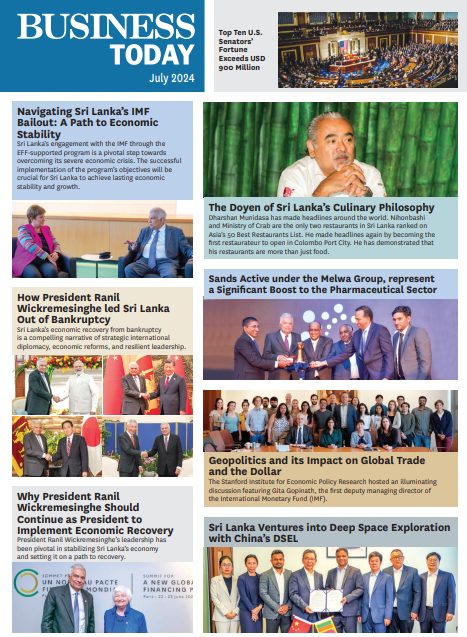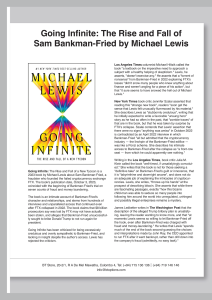
Hatton National Bank (HNB) has very much been at the forefront of a bold effort to lead Sri Lanka into a new paradigm of digital banking supported by extensive investments into the automation of its back-end systems, which in turn freed up the Bank’s most valuable assets – the large and growing family of HNB employees – to get creative about products, and substantially more focused on customer service and engagement. Nearing the culmination point of the ambitious transformational journey commenced under HNB’s Vision 2020, Jonathan Alles, Managing Director/CEO, HNB occupies a unique position in the domestic industry, having successfully designed and spearheaded one of the most radical growth strategies in the domestic banking industry. He elaborates on the key strategic imperatives of the Bank moving into an increasingly volatile domestic economic environment, and the medium-long term opportunities which HNB aims to leverage in order to further revolutionize the fundamentals of banking in Sri Lanka.
By Udeshi Amarasinghe and Jennifer Paldano Goonewardena. Photography Mahesh Bandara and Menaka Aravinda.
Over the past years HNB has continued to climb the ranks in the Business Today TOP 30, this year reaching number one. What are some of the factors you feel have contributed to this success?
At the time I took over, we had a relatively young team stepping into key positions across the Bank and ever since, I would say that internally, HNB has been a hive of activity. Of course our immediate focus was to enhance the Bank’s key performance indicators (KPIs) with a particular focus on strengthening the bottom line and rapidly expanding our balance sheet. As these preliminary measures started to get real traction, in 2017 we began the process of formulating our three-year strategic plan for HNB which we termed ‘Vision 2020.’
Considering the depth and breadth of this aggressive transformational journey, we collaborated with the leading multinational professional services consultants Deloitte, in order to ensure that we are able to execute on this ambitious vision.
Internally, this resulted in the launch of the ‘Everest Bank Transformation Project’. This project simultaneously focuses on multiple verticals and disciplines of transformation across the entirety of business and operations at HNB.
The unwavering and holistic approach to re-examining our role as a change-leader for the Sri Lankan banking sector, has proven to be extremely timely, considering that our Vision 2020 strategy was first conceptualized during a period of relatively better economic growth for Sri Lanka. Since then, there has been a clear and definite shift towards a much more challenging macroeconomic environment.
Particularly over the recent past, the national economy has been characterized by low GDP growth and high interest rates have also exerted stress on the domestic banking industry. We have also seen these subdued economic conditions beginning to translate into rising NPLs for the industry, leading to a greater emphasis on recoveries and greater cautioning in lending. In order to ensure bank asset quality is maintained, such prudential measures will have to be continued over the medium term. But in the short-term, this will mean that banks and other sectors of the economy will have to also look at optimizing efficiency and enhancing their competitive and innovative ability in order to remain profitable.
This is very much the type of thinking which we at HNB had already deployed as part of Vision 2020, and we have certainly benefited from this approach. An area of paramount emphasis for HNB was enhancing the credit and compliance culture through a more sustainable business operating model. Accordingly, HNB embarked on a radical restructuring of our branch operating model in order to arrive at an optimized model by segregating sales and service, credit and operations under separate verticals.
This approach also creates room for employees at branches, regions and head office to focus on deeper specialization in their own areas of expertise, and lends itself to good quality credit, good servicing of the client as well as good operating standards. Even in depressed market conditions, these investments and strategies have served HNB in good stead. Moving forward, we are confident that the domestic economy will start to gather momentum, and when it does, HNB will be placed in a prime position to gain the maximum competitive advantage given that we will have the capacity of managing significantly larger volumes of business without compromising on credit quality and the overall level of controls needed to manage these volumes.
Over the next 18 months, our goal is to consolidate these remarkable advancements for which we have made outstanding progress already.
HNB has had 130 years to develop strong relationships with customers. Can you elaborate on the advantage this offers the Bank?
Since our inception in the hills of Hatton 130 years ago, there has been one priority which HNB has maintained above all others and that is our relationships with our customers. In that time, we have engaged with every level of the Sri Lankan economy – from rural entrepreneurs and SMEs to corporate giants at the center of the Sri Lankan economy – we have always focused on enhancing our customer value proposition and experience.
This focus remains in place to this day and we track customer satisfaction and Net Promoter Scores so that we are always conscious of how HNB stacks up against the competition. Similarly, our on-going Everest Transformation also considers client experience to be another vital KPI to measure the success of the project.
After all a bank is in many ways the ultimate in the service industry, whether it is Corporate Banking, Mid-Market, SME or even Retail, it is all about managing relationships. Our strategy has been to assign relationship managers to all of our Corporate and Mid-Market customers in order to offer an integrated ‘one-stop-shop’ service proposition for businesses. In this manner, we are able to provide the entire gamut of HNB’s services with ease while enhancing our ability to resolve any difficulties a customer may face.
Meanwhile, our vibrant SME business is driven and managed primarily through dedicated SME cells created in our regional offices. Each SME cell is in turn staffed with SME relationship managers who go out into the field in order to engage with as many businesses, understand their requirements and support them to develop and grow. This is another area in which HNB has served as a true pioneer.
A similar model has also been adopted across HNB’s ground-breaking Microfinance business under the brand of HNB Gami Pubuduwa. Working with a team of hundreds of microfinance officers, HNB has worked to ensure that it’s microfinance customers are also provided timely access to credit on the most fair and reasonable terms possible, thereby supporting small but thriving communities in agriculture, dairy, fisheries and various other sectors with essential microfinance services. With both our SME and Microfinance arms, it is important to note that our goal is not simply to start immediately generating profits out of these businesses. Instead, our goal is to support these enterprises to grow in a sustainable manner, providing not only capital, but equally importantly – advisory services. This way, we aim to facilitate as many of these enterprises as possible to expand and graduate their businesses into fully-fledged corporates over the medium long term.
HNB’s stance of personal banking is also deeply value driven, a factor which has enabled the Bank to be declared Best Retail Bank by the Asian Banker for an impressive ten years. HNB’s retail business is managed in different tiers so as to ensure that each customer demographic is provided with benefits that suit their individual requirements. In that regard, HNB not only matches but also exceeds the value propositions offered by our competition.
Our unique ‘Club’ proposition, is unparalleled and does not have its equivalent in any other bank in Sri Lanka. The next tier, which is the ‘Priority Circle’ is pitched in line with the private banking propositions of the other banks and is offered through our customer centers in major towns.
Additionally, we have product offerings that support the requirements of personal banking customers across the country. Whether it is a unique housing loan proposition, personal loan, credit cards, vehicle lease, deposit mobilization products, or minor savings; they are all bundled in various packages in order to provide the kind of solutions that actually solve problems and comprehensively cater to our clients’ needs.
The customers are given the choice of reaching the Bank through omni-channels depending on their convenience, including branch network, internet and mobile banking, ATMs, the cash recyclers, and kiosks and the 24-hour call center.
Most recently we also launched HNB SOLO, a ground-breaking payment app that gives our clients access to more convenient transactional capabilities, and which has the potential to develop into a whole new line of business for HNB.
All of these solutions being integrated into HNB’s collective value proposition means that we are able to offer solutions to different segments and clients that is personalized to their needs. And through the continuous engagement of our senior officers’, supported by research and surveys, we are able to understand what our discerning customers want on an unprecedented level. Working with these types of solutions HNB is working to drive an unprecedented new paradigm in banking across Sri Lanka.
Over the past year, the HNB Group’s total assets surpassed 1.15 trillion rupees. How was this achieved?
This remarkable level of growth is primarily a reflection of the milestone performances achieved across HNB’s core banking business, and supported by our other group companies particularly HNB Finance. It has been expanding at an impressive rate – even when considering the weaker macroeconomic environment.
Similarly, our insurance business has also achieved commendable growth over the past, and this too is an investment which is yielding strong returns to the group.
While our investment banking arm has had its challenges in the context of subdued trading activity on the Colombo Stock Exchange, the Venture Capital business has also contributed positively. However, it bears reiterating that the majority of our growth momentum over the past has been spearheaded by the banking business particularly in relation to the outstanding growth in our corporate banking book.
The SME sector has also continued to grow and the growth from these commercial segments has come from diverse sectors, including agriculture, hospitality, healthcare, manufacturing, trading and energy. On the retail front our product range catering to the needs and changing lifestyles of our customers has contributed to the growth. Although during the year, we have seen subdued demand for credit due to the prevailing sluggish market conditions, we expect these sectors and segments to drive growth when the market sentiments improve.
How has the banking sector been impacted by increased taxation and impairment charges?
Banks can leverage their capital multiple times and therefore, when banks are strongly capitalized, they can lend ten times more than their capital into the economy thereby providing vital and much needed stimulus for economic growth. In that context, high levels of taxation on the banking sector can amount to diminishing returns as it limits the ability of the banking sector to play their part and align themselves with national development. In that regard, having to pay, VAT and NBT on top of the high corporate tax of 28 percent and the total effective tax for the banking sector being close to 60 percent with the introduction of the Debt Repayment Levy (DRL), results in a considerable erosion of the entire sector’s bottom line. As a result, banks have very little left to pay dividends to shareholders and channel into further internal investments.
In effect, there is next to nothing retained to stimulate growth. In that context, it is absolutely imperative that the taxes charged from the banking sector be used very productively and is reinvested in the economy as it is not sustainable for the country as a whole, otherwise.
The DRL was introduced at a time when the banking sector was grappling with the challenges of IFRS 9 accounting standards and the high capital requirements directed under the Basel III guidelines. IFRS 9 demands higher impairment charges as opposed to the incurred loss model we were following, and economy was going through a downturn at the time the sector transited to the new standard, intensifying the impact on the profitability. Even if the transition took place in a period when the economy and the banking sector were on an upswing and we had a more favourable interest rate environment, these twin impacts would have presented notable challenges for the domestic banking industry. As matters stand at present, we face low growth, and difficulties in collections, hence, the impact of IFRS has been more pronounced. While it is necessary that we fall in line with these requirements, we also need to be relevant and helpful to our customers in continuing their business, while appreciating that they are also operating under very difficult circumstances. A bank like HNB has been with its clients throughout and will continue to do so despite the challenges posed by these standards and regulations. We are deeply committed to playing our role on behalf of the country, and the people of this country, whilst making sure that we protect our shareholders and our depositors and give them optimal returns. We feel there is space for more conducive policies to help support these objectives.
What about the perception that banks or financial institutions do well regardless of the economic situation?
The current situation is a good example of that statement not being accurate. Generally, you would like to see growth in most industries, and see a company in a particular sector growing its profits based on the opportunities that are available. This is not true for the banking industry. Hitherto the banks and their profits grew. But banking industry profits have taken a beating in 2019 and Year-on-Year that has been an inarguable reduction. This shows that the perception that banks will always make money in good times and in bad is not accurate.
HNB considers itself a partner in progress to generations of Sri Lankans and we will never abandon that duty, whether times are prosperous or challenging. That being said, it is essential that all measures capable of supporting a revival of the banking industry and wider macroeconomic fundamentals are vigorously pursued.
Do you feel that today’s Sri Lankan banking and financial sector is overly saturated?
For the scale of business that is available today, I would say we are oversaturated. Especially in the context of the need for stronger capitalization and higher capital buffers through BASEL III, it will be a challenge for banks to continue to raise capital given the limited business that is available domestically. I believe that the time is opportune for banks to consider opportunities to merge, to create a few larger banks that would have the capacity and the scale to carry out regional transactions and play a role beyond Sri Lanka. This will help diversify the portfolio and thereby making it less reliant on a single economy or a single series of cash flows.
You mentioned that HNB has been cautious in its approach considering the macroeconomic environment. Can you elaborate on this?
Similar to the other banks in the industry, we also observed challenges in our portfolio and we were very proactive to identify and fill these gaps almost immediately. The reality has been that there are limited opportunities available. However, we have not compromised or deviated by board approved credit policies and appetite statements for the purposes of growing the business and hence have adopted a cautious approach in order to maintain asset quality.
In the current context, with opportunities for growth being limited, our focus has been on bifurcating our credit role, making further refinements to our risk models and risk management frameworks and driving our transformational project which would yield better results when the time is right.

Can you elaborate on the performance of each sector, corporate, retail and SME?
The corporate banking business has dominated the market in the last five years and has led to a growth in the market share. Most of the large companies bank with us and we have a great relationship with them. Out of our 130 years, many of these clients have been with us for several decades and we have forged unbreakable partnerships in that time. But with the slowing down of economic growth, the corporate banking business has seen a slight corresponding reduction, as many corporates have become very cautious about taking on new projects and investments.
Despite the current challenges, corporate banking remains a solid business segment for the Bank. Signs of stress is evident as well, but overall, we are positive on the segment and look forward to growing the corporate banking business. It still represents a sizeable part of our overall portfolio, representing nearly 44 percent of our total loan book.
Mid-market corporates are another segment with strong growth potential as the emerging corporates of Sri Lanka. In addition to meeting the normal working capital requirements of these customers, HNB offers a comprehensive array of solutions to these customers through payment and cash management, custodian services, trade finance and project finance. The SME sector has been our traditional business, which has grown significantly over the years, but today, there are certain sectors which are stressed and it is an area that the Bank needs to focus on, especially in terms of recovering some of the NPAs.
Microfinance is our passion, and we would continue supporting this segment both through HNB and our subsidiary HNB Finance. In that regard, HNB has long been vocal about the need for legislative reforms at a national level to introduce regulations that would improve the management of microfinance businesses.
We hope there will be adequate governance and regulations introduced in order to identify individuals who enter the industry for short term gains and take necessary action. This will enable a bank such as HNB that has demonstrated genuine passion to stay engaged, to provide for inclusivity and sustainability and is able to build on what we have delivered to date – whether it is doing business with women or with rural communities and the grassroots. The future of microfinance in Sri Lanka ultimately hinges on how well this sector is regulated and disciplined.
Similarly, HNB’s substantial personal banking book also holds potential for further growth and we see many opportunities to improve and expand in future, particularly in terms of extending digital banking services to a growing youth segment that is increasingly tech-savvy, timeconscious, and value-driven.
We also anticipate the need for generating substantially more employment and entrepreneurship opportunities for our intelligent youth and this is where banks such as HNB need to come in to support them with housing loans and various other schemes that will help them progress in their lives and livelihoods.
HNB has a strong team who are very customercentric. In this challenging economic environment how do you encourage them in terms of business and performance?
The HNB staff is very loyal, dedicated and committed, and in addition they have been very resilient. They have been able to withstand great pressures during various downturns and challenges given the breadth of business that HNB operates in.
There are different sectors and segments that have been affected at different times. The team at HNB is very experienced and uses that experience wisely to adapt to new situations that we face every day. I am delighted to say that they are also showing outstanding agility. The support that they give towards project Everest and their ability to manage different business paradigms, changing needs and demands of clients and the emergence of technology and digitalization is a testament to their ability to evolve and adapt. Part of this ability stems from the optimum blend of youth and experience in our team, and part of it is a direct result of the culture that we are working to build at HNB.
All these changes are faced equally by the young staff who have just left school and our seasoned executives who were not used to the pace of change that is taking place currently. But I’m delighted that all have contributed positively, which is a true blessing for us.
As the Management Team and the Board, we are deeply aware of our responsibility to always support this vibrant young team. We strive to ensure that they are provided with the tools, training, and skills they need to develop themselves and progress vertically. At the same time, we focus on refining their soft skills to enable working in collaboration, and ultimately delivering the utmost value to our customers.
What about overseas expansion for HNB?
At present, HNB is the most diversified banking and financial services conglomerate present in Sri Lanka.
Our insurance businesses life and general are both showing encouraging signs of growth. We are part of an investment banking group, which has corporate finance, investment banking activities, stock brokering, primary dealership, as well as venture capital and we also manage a finance company, and a property development company.
Hence we already have a significant commercial interest that we manage domestically. That being said, as always we look for prospects to broaden the base of our revenue streams and reduce the dependency on one economy. As such, we are on the hunt for opportunities to grow in the regional market. If we can find such opportunities that possess the right fundamentals, and is capable of generating optimum returns we will certainly act proactively to secure such investments.
HNB is Number One in the Business Today TOP 30 after 22 years, and this is attributed to your leadership. Can you elaborate on this achievement?
HNB is a very large bank and group as well. As such, I have always been of the view that our successes cannot be attributed to a single person or even a single business vertical. In that regard, this year’s ranking is the result of a continuous and unmatched team effort, with amazing and inspiring contributions being made from all parts of our organization.
HNB is a very large bank and group as well. As such, I have always been of the view that our successes cannot be attributed to a single person or even a single business vertical. In that regard, this year’s ranking is the result of a continuous and unmatched team effort, with amazing and inspiring contributions being made from all parts of our organization.
Vision 2020 has brought HNBers of all ages from all parts of the country together, aligned in moving towards the same direction with belief, there is total buy in from all employees and high expectations to make the ‘Everest Transformation Project’ a remarkable success. It has been a great ride as a team and the greatest pleasure has been to see youngsters and people at different levels grow to new heights, taking higher responsibilities and increase their contribution at every level of HNB.
Our success also stems from the unrelenting focus on achieving the numbers the quantitatives in the initial period between 2014 to 2017 and setting the industry benchmarks in terms of all KPIs.
With vision 2020, since 2018, in line with our focus of being future ready, we are looking at qualitative aspects of having a bank that is ready to leap frog. There is a significant amount of development taking place in this regard, where we concentrate on our people, their development, ensuring the culture and the mind-set fit, business sustainability, client focus, digitalization and development of our IT systems.
A major part of the next phase of our strategy will revolve around creating future-ready HNB employees who are ready, willing and able to overcome challenges, remain relevant and take on the market over the next decade or so.
The success of the Everest Project and achievement of Vision 2020 are important goals. Through this, HNB would move to become a bank that is agile, nimble and able to service the rapidly changing needs of its customers, to stay relevant to the various growth sectors in the market and continue to play the role that it has played in servicing its people, as well as being a major contributor to national development, while looking for profitable opportunities to engage outside Sri Lanka. We foresee growth, but we seek sustainable, high quality growth through people who are future-ready.






